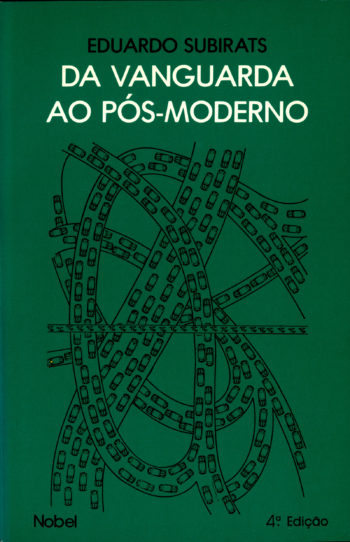The military concept of an avant-garde, taken up as an aesthetic category that defined the most innovative tendencies of the twentieth century, is ambiguous: it subjects artistic expression to a process, to a logos and to the negative goals of criticism and rupture. Its end result is the aesthetics of abstraction and the death of art. Nonetheless, this anti-aesthetic logos of abstraction goes hand in hand with the logic of commodities and with instrumental reason. Its ultimate goal is the corporate formation of reality as spectacle. This was my point of departure.
The avant-garde is a critical point of departure with respect to modern “movements” and opens the door to new forms of interpretation in twentieth century poetry, painting, and architecture. I sketched its contours in my extensive series of essays: Da vanguarda ao pós-moderno (1984), La flor y el cristal (1987), Hugh Ferriss y la utopia de la metrópolis moderna (1992), El arte en una edad de destrucción (2013) Paraíso (2001, 2005, 2013), Mito y literatura (2014), and El muralismo mexicano (2018).
Together with the anti-aesthetic negation of the possibility of works of art, the dialectic of the avant-garde incorporates its linguistic reformulation under a logical-transcendental epistemology (Mondrian, Malevich, Gris…) and the grammatology of the spectacle (electronic events, event cities, fake news…). It comprehends two tenets: the construction of a new, entirely instrumental civilizing reality and the incorporation of artworks into the fetishized logic of commodities.
The concept of spectacle was coined by Guy Debord in 1967 as an extension of a critique of Marx’s capitalism. In La cultura como espectáculo (1988; revised and republished as Culturas virtuales, 1989, 2001) and in Linterna mágica (1997), I reconstructed the synthesis of commodity fetishism, modern anti-aesthetics and the Surrealists’ production of simulacra as the three theoretical pillars of postmodern spectacle.
